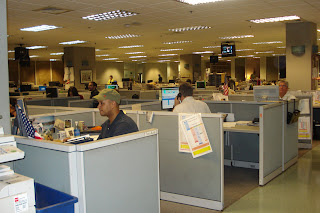Blogging upholds our freedom of speech by building a foundation for self-expression and interactivity, yet when dealing with rising issues of copyright law and libel liability, how do we determine when our words have crossed the line?
Over the years, courts have struggled to maintain a balance between defending those who have been defamed by bloggers and protecting one’s first amendment rights.
In Chapter 10 of “Online Journalism: Principles and Practices of News for the Web,” author James C. Foust defines libel as “the publication of false information that is defamatory, or likely to harm someone’s reputation.” According to Foust, statements contained in chat rooms, discussion boards and forums can be held liable for false and defamatory speech, since they are considered published information.
As Jennifer L. Peterson reports in Wisbar.org, “the standard for defamatory speech is the same whether the medium is paper or the Internet.” According to Peterson, there are three elements to a defamation claim: 1) a false and defamatory statement concerning another; 2) made in an unprivileged publication or broadcast to a third party; and 3) with fault amounting to at least negligence on the part of the speaker.
Section 230 of the Communications Decency Act of 1996 contains protection for online service providers and users and encourages courts to extend immunity to bloggers, stating in part that "No provider or user of an interactive computer service shall be treated as the publisher or speaker of any information provided by another information content provider.”
According to Peterson, “Section 230 was enacted, in part, to maintain the robust nature of Internet communication and, accordingly, to keep government interference in the medium to a minimum…encouraging "robust" discourse by bloggers, therefore, is consistent with the purpose of section 230 and, not incidentally, the First Amendment.”
In Cubby v. CompuServe, a New York federal district court held that the CompuServe Internet service provider (ISP) was not liable for defamatory statements made by a subscriber in its online forum, since it was determined that CompuServe had not exercised any editorial control over any published information/statements.
However, Sections 230 does not intend to provide absolute immunity to all types of Internet communication. In Stratton Oakmont, Inc. v. Prodigy Services Co., the court ruled that the Prodigy ISP was responsible for published libelous statements, since they actively engage in screening and editing content on its bulletin boards and forums.
According to Foust, “a statement made in a discussion forum that is clearly an opinion could not be considered libelous, but a statement asserting factual information could be.” Since no significant court cases have provided guidance on this issue, a website, as noted by Foust, is therefore presented with three choices: 1) screening and editing all content appearing on discussion boards and in chat rooms, which can prove time-consuming and expensive; 2) exercising no control over what users say, which can make potentially libelous statements accessible to the public; or 3) choosing not to provide discussion boards or chat rooms at all, which is considered the most popular choice nowadays, yet does not seem to address the issue at hand.
In an effort to make sense of this blogging legal haze, maybe it’s time for the courts to reevaluate its defamation standards. Until this happens, perhaps we should hold ourselves accountable for our words and set our own standards of personal responsibility.
Check out these interesting links:
http://www.wisbar.org/AM/Template.cfm?Section=Wisconsin_Lawyer&TEMPLATE=/CM/ContentDisplay.cfm&CONTENTID=56211
http://en.wikipedia.org/wiki/Communications_Decency_Act
http://www.internetlibrary.com/cases/lib_case69.cfm
http://www.internetlibrary.com/cases/lib_case80.cfm



